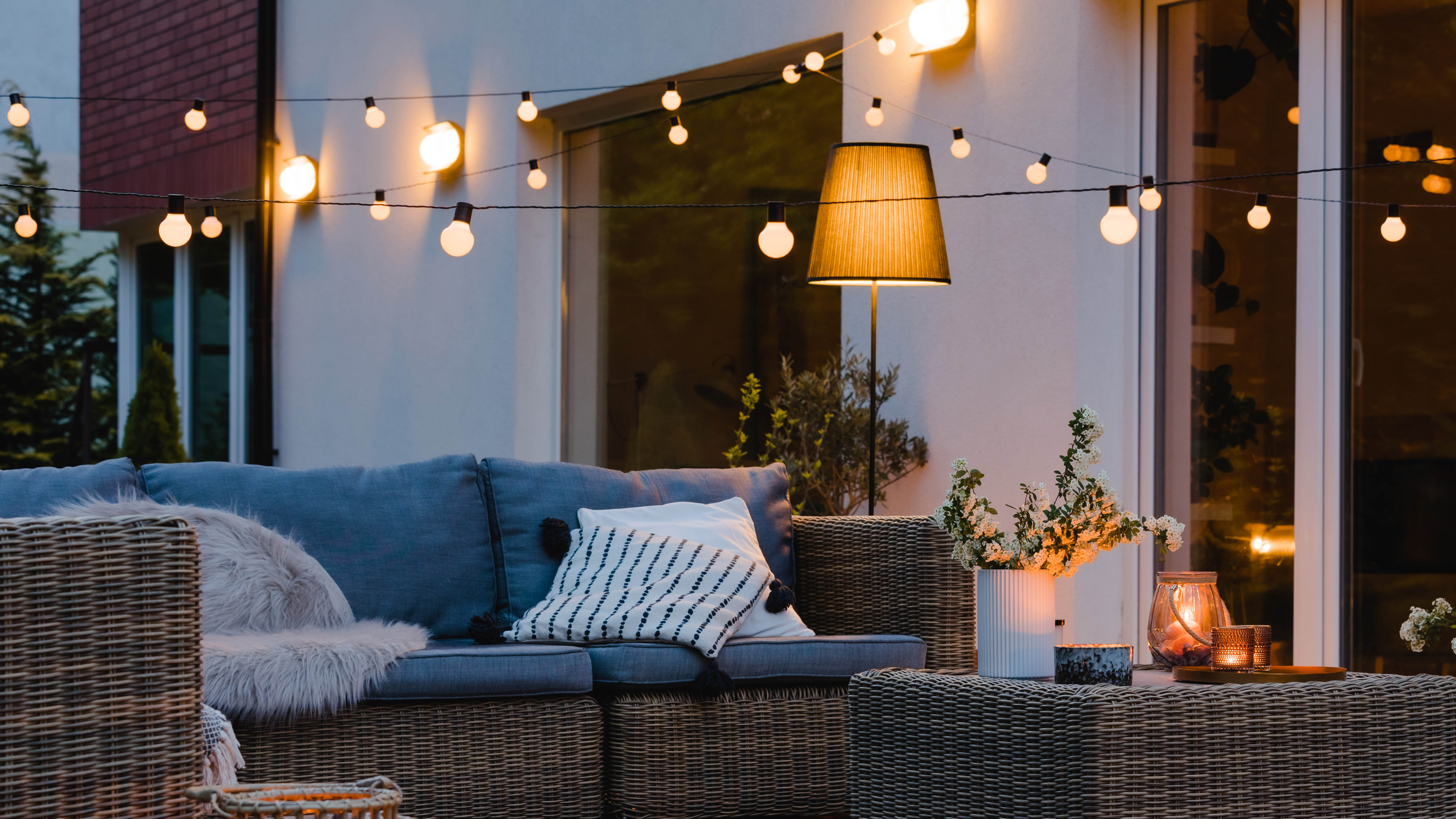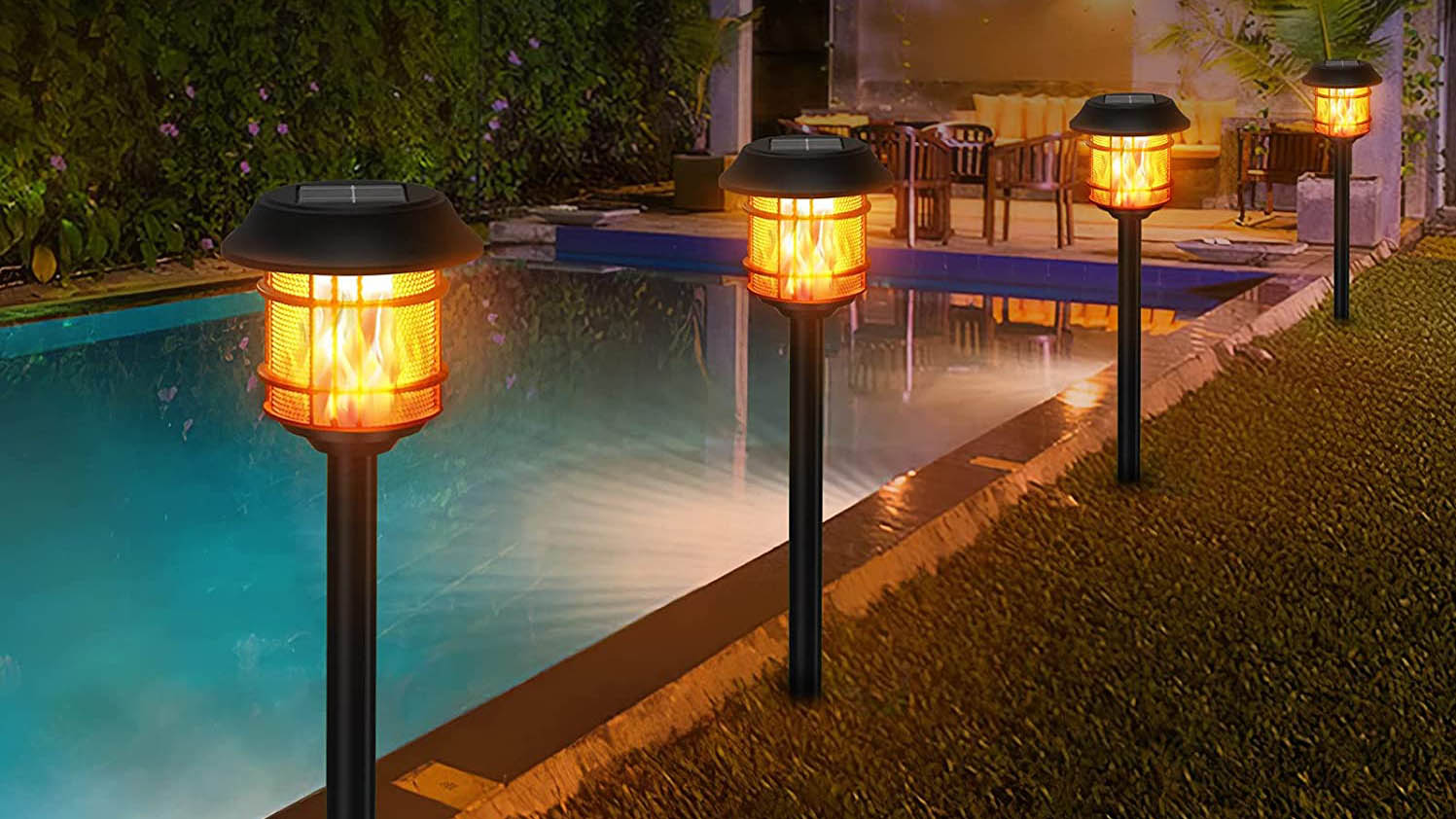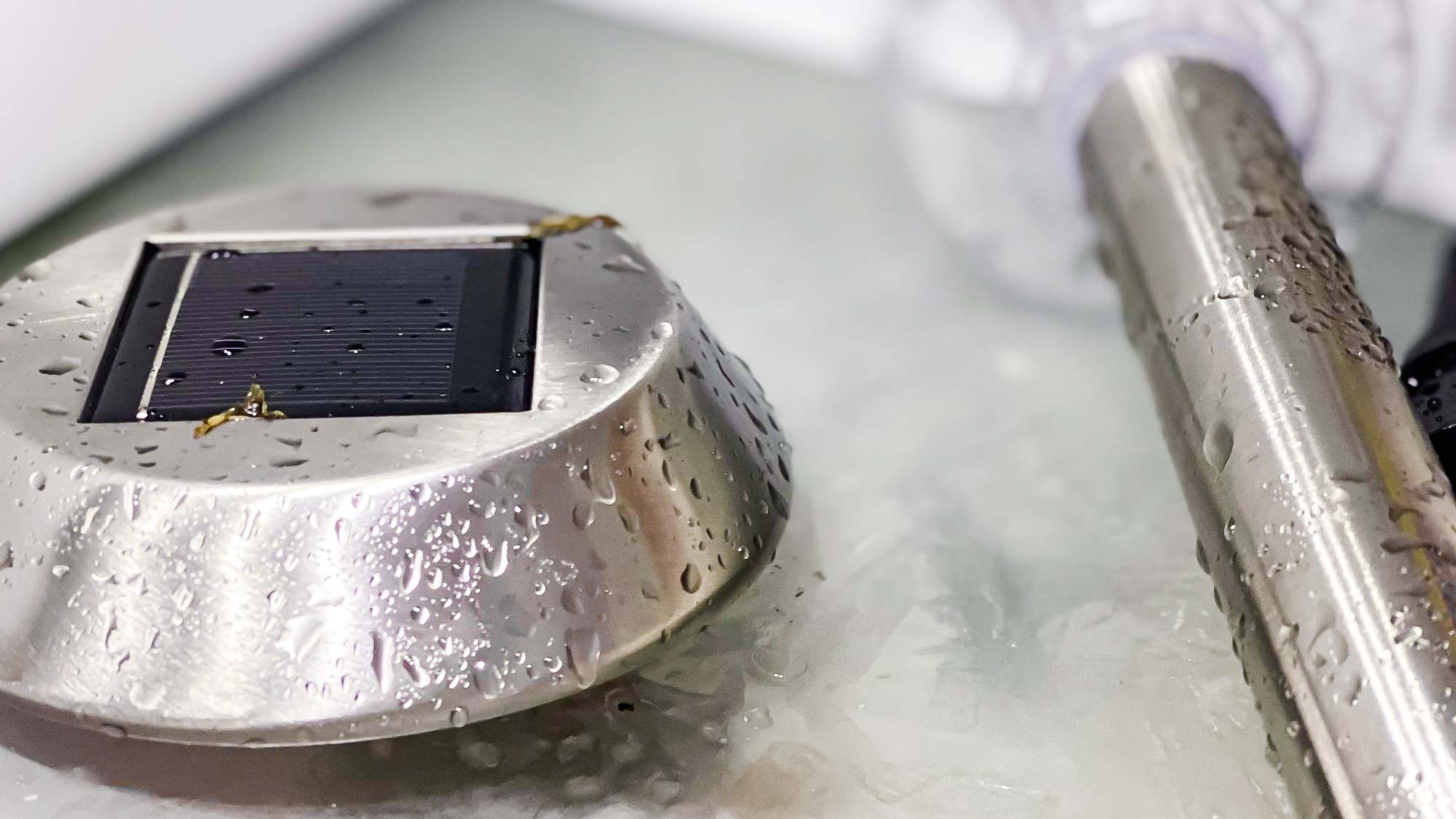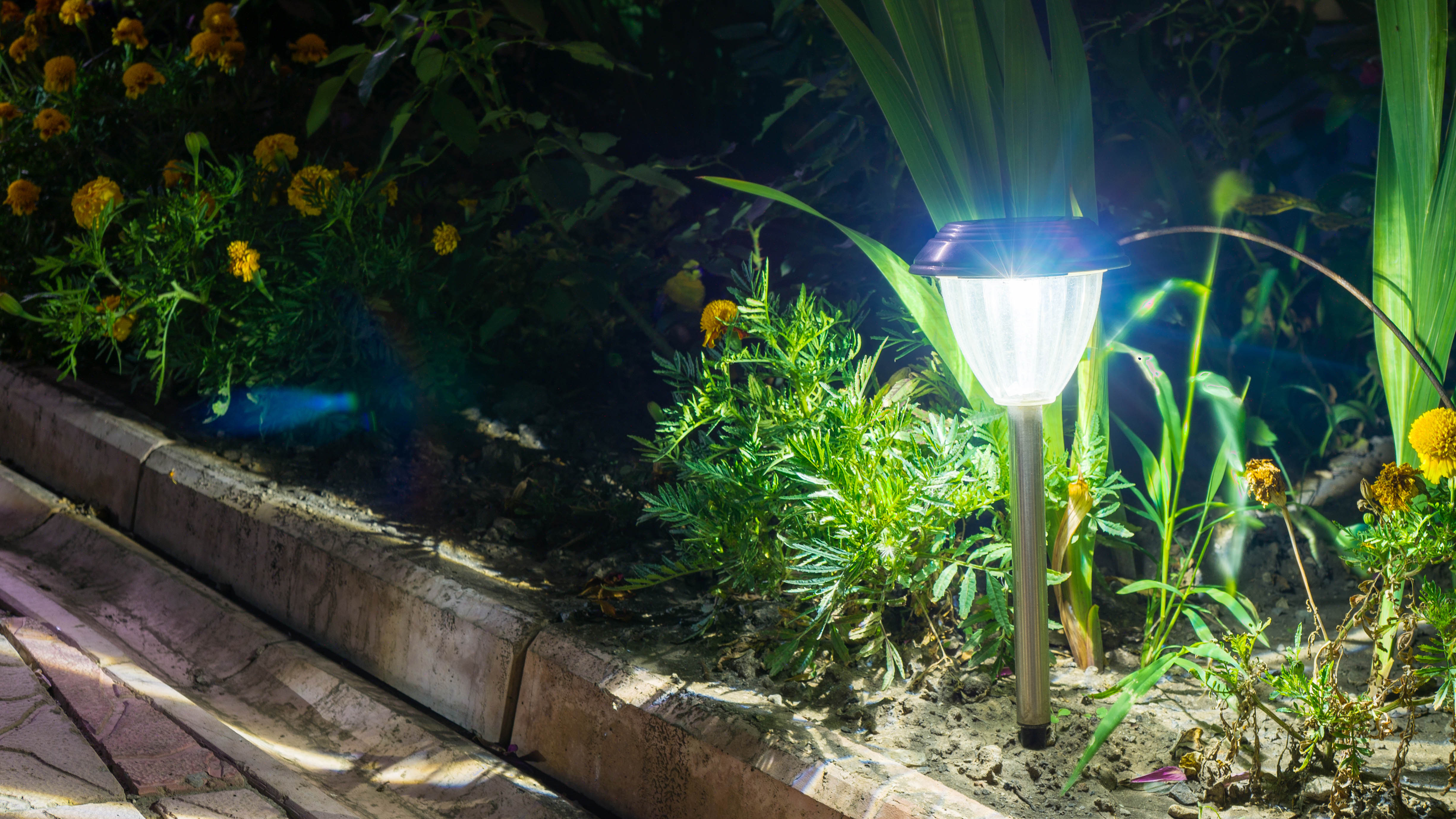5 things I wish I knew before buying solar lights

Warmer weather is here, and the ideal time to prepare for those backyard gatherings.
And if you want to continue your entertainment well into the night, the best solar lights will provide the ultimate “glow-up” once the sun goes down.
As someone who is obsessed with homes and interior decor, I’ve probably spent a fortune on lighting over the years.
The practicality of not requiring electrical plug/sockets means that you can place solar lights virtually anywhere around your home. These simply self-charge in the sun through the day and come to life at night — while being more sustainable in the process.
But while the possibilities with solar lights are endless, there are some things I wish I’d known before buying solar lights. These simple considerations can make all the difference to your desired outcome — and will probably save you money in the long-run!
So before you splash out on expensive lighting to spruce up your home, here are some things I wish I knew before buying solar lights.
These pathway lights come in a set of eight and are ideal to illuminate walkways and paths. Designed with a durable glass body, Mancra's lights also come with an IP65 waterproof rating and high-impact resistance. Equipped with a smart light sensor, these lights offer a warm white illumination to last all night.
1. Choose the right lighting for your location

Not all solar lights are created equal, and it’s important to know exactly what you want to illuminate and location before buying.
Get instant access to breaking news, the hottest reviews, great deals and helpful tips.
Do you want it to showcase your beautiful plants and landscaping? Do you want string lighting for a more romantic aesthetic, or do you simply want to uplight your pathways or patio doors?
I’ve made the mistake of buying lights without thinking about where I was going to place them — or whether they were even suitable for the location. This would often result in me spending more to buy the correct lights.
In addition, consider how high up you need your solar lights to be. If you have a compact yard or lack ground space, you’ll probably benefit from wall lights. These are installed on the external walls or fence of your home and provide light immediately around it.
Alternatively, if you just want to highlight specific areas in the backyard rather than lighting up the entire space, solar spotlights are a great option.
Similar to path lights, these are usually designed with stakes to hold them in the ground, just ensure you place them in a location where it will receive adequate sunlight.
To save you the disappointment (and money), always choose the right solar light type to get the most out of your lighting.
For more top tips, check out our helpful guide on which solar lights should you buy?
2. How many lights do you need?

Another mistake I’ve made is not considering how many solar lights I’ll need and how bright they'll need to be.
For instance, I purchased string lights for my backyard only to find that the bulbs and cable length were shorter than the actual fences. I’d also bought pathway lights for my porch, before realizing they were not adequate enough.
With that in mind, check the number of bulbs and the length of any cables to ensure it covers a specific area.
Similarly, when placing multiple solar lights around your yard, make sure they are adequately spaced and not clustered together.
Proper spacing will avoid shading each other, and helps each light receive enough sunlight.
Experts recommend tilting your solar panels between 30 and 50 degrees to ensure they receive adequate sunlight even during winter months. Plus, you don’t want your yard perfectly lit in one corner, and dark in other areas.
Additionally, think about what tone of lighting you want in your outdoor spaces. Most solar lights use LED bulbs which project a white light. However if, like me, you find this too harsh, you might prefer a warm, soft tone, or invest in solar lights with colorful tints to match the mood.
3. How much sunlight does the location get?

We all know that solar lights need the sun to work, so be prepared for your lights to struggle in the wrong locations.
I’ve been guilty of placing solar lights in shaded areas of my yard or spots that lack sunlight and have noticed a huge difference.
Knowing how best to place solar lights around your home, also depends on the type of solar lights you choose.
Generally, lights require eight-10 hours of direct sunlight per day to produce around 15 hours of illumination. So it's best to place your lights in an area that isn't shaded by trees, walls or even certain roofs, as these can obstruct the amount of light the solar panels receive.
And while solar lights do still work on dull, cloudy days, the charge isn’t likely to last as long.
A clever trick is to simply bring your solar lights indoors during the day and leave by a window. Surprisingly, LED solar lights can charge through glass, as the photovoltaic cells are sensitive enough to get the right light wavelengths.
Alternatively, you could try these top tips on how to charge solar lights without sun.
4. Don’t buy cheap solar lights

I’ve often been enticed by cheap solar light options — only to be disappointed each time. And while these had transformed my backyard on a budget, it wasn't too long before they’d stop working.
It’s far better to spend the money on quality solar lighting to guarantee better results. Ideally, buying lights with a rating of IP65 or higher is more suitable for outdoor use.
You want to make sure your solar light will last throughout the year, and can withstand extreme weather conditions.
As the saying goes, “you get what you pay for,” and if you’ve found a ridiculously cheap bargain, it’s probably too good to be true!
5. Consider timer settings

Another thing I hadn't considered was whether solar lights came with any timer settings.
Certain lights have a built-in timer that will automatically turn off your lights after a set time — usually between two and six hours. What’s more, some smart or motion lights have multiple modes, where you can customize and adjust auto timings and color variations to suit your lifestyle.
So it’s worth deciding whether you’ll prefer the convenience of timer settings before investing in quality solar lights.
More from Tom's Guide
- 5 reasons why your solar lights are not working
- Are solar lights bad for your plants?
- Best smart lights

As the Homes Content Editor, Cynthia Lawrence covers all things homes, interior decorating, and garden-related. She has a wealth of editorial experience testing the latest, ‘must-have’ home appliances, writing buying guides and the handy ‘how to’ features.
Her work has been published in various titles including, T3, Top Ten Reviews, Ideal Home, Real Homes, Livingetc. and House Beautiful, amongst many.
With a rather unhealthy obsession for all things homes and interiors, she also has an interior design blog for style inspiration and savvy storage solutions (get rid of that clutter!). When she’s not testing cool products, she’ll be searching online for more decor ideas to spruce up her family home or looking for a great bargain!
You must confirm your public display name before commenting
Please logout and then login again, you will then be prompted to enter your display name.

